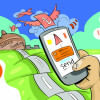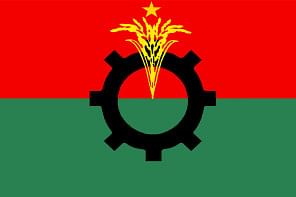Bangladesh cannot become smart with a gaping digital divide

Despite the Smart Bangladesh Vision 2041 turning into a central theme of the nation's futuristic progress narrative, the digital divide remains a major issue.
According to Bangladesh Sample Vital Statistics (BSVS) data, despite the increase in the number of internet users, only 37.1 percent of the rural population uses the internet, while the figure stands at 53.7 percent for the urban population. Similarly, while 47.6 percent men use the internet, for women the figure stands at only 34.6 percent. Even among women internet users in rural and urban areas, the digital divide is gaping at 30.5 percent and 47.9 percent, respectively.
While the government has taken many initiatives to realise the Smart Bangladesh vision, a significant chunk of the population remains beyond the digital umbrella, especially in rural areas where digital connectivity is hard to find. This is despite the Digital Bangladesh 2021 vision being driven since 2008. I have worked in many remote villages of Kushtia and Rangpur on youth skill development and women empowerment projects over the last few years, where WiFi or broadband internet were not only unheard of, but mobile internet was also difficult to find.
While the city centres and upazilas are somewhat covered by pricey mobile internet packages or broadband connections – despite the Bangladesh Telecommunication Regulatory Commission (BTRC)'s "One Country, One Rate" initiative launched in June 2021 that set the standard tariff for a 5 Mbps connection at Tk 500, many service providers are still charging users a higher price – there are many villages in the fringes where the youth (especially girls) face difficulty in accessing the internet for academic purposes.
While experts have blamed lack of infrastructure and technological resources for the low penetration of internet in rural areas, there are two major factors that need to be taken into consideration: socio-economic ability and literacy level.
The cost of internet in Bangladesh is high. A report by VPN provider Surfshark revealed that people in Bangladesh pay 6.9 times more for internet access than the rest of the world.
Logically speaking, at current prices, and amidst the burden of unbridled inflation and economic volatility, one cannot expect the underserved rural population to be able to afford internet services, especially since it is not a need for them.
Secondly, access to digital literacy among the youth is very limited in rural areas, especially in remote villages. While some of these youths have access to smartphones and mobile internet, they use it mostly for entertainment and friendly communication. As such, the ability of these youths to use digital devices and the internet to generate income – through f-commerce, outsourcing, etc – remains severely stunted.
Then there is the problem of mobile internet speed. Ookla's Speedtest Global Index of 2022 ranks Bangladesh at 121 out of 141 countries, with its maiden download speed of 14.34 Mbps. Among South Asian countries, Maldives stood 25th globally, and India ranked at 79 with a maiden download speed of 25.29 Mbps.
Not that Bangladeshis cannot manage the basics at its existing internet speed – making calls, sending text messages, viewing content. But for those working in outsourcing, especially in jobs involving graphic design and VFX, data transfer can be a painful challenge.
At a glance, it looks like the government is operating at a beginner level in materialising its digital vision, with a significant population outside the digital coverage unaware of these initiatives or unable to avail the services. For instance, although the government has made many of its services digital – or is "computerised" more accurate? – their utility remains limited, especially outside the cities.
Moreover, many of the important services are yet to be digitalised, and the digitisation process remains full of discrepancies to this day. For instance, toll booths are still operated manually, resulting in long queues during holidays, despite the commitment in 2008 to automate 50 percent of the toll collection booths countrywide. And while corrections on national ID (NID) cards can be requested online, the process is not fully digitalised, with individuals being required to go to the office to update their addresses, for example. While people with NID cards should not have to give their fingerprints again, they are still required to when trying to get a driving licence.
It is high time the government took a closer look at the deeper, more strategic implementational layers of its Digital Bangladesh vision to see where it had gone wrong in fully materialising it and take lessons from these past experiences and mistakes to effectively implement the new Smart Bangladesh vision.
The government should also look at its global scores in various rankings – including the UN's E-Government Development Index (EGDI) which assesses three dimensions of e-government: provision of online services, telecommunication connectivity, and human capacity – to identify blind spots and room for improvement, so that these can be navigated better while implementing the Smart Bangladesh vision.
In essence, this vision is about being inclusive; about empowering citizens with Smart Governance, Smart Economy, and Smart Society. It is about bridging the digital divide. But for all this to happen, the government needs to work on the basics, such as chalking out a reasonable, time-bound, goal-oriented strategy, formulating relevant policies, onboarding partners and service providers, forging effective collaborations, identifying logistics and resources and channelling them without pilferage, and taking all these one step at a time.
Tasneem Tayeb is a columnist for The Daily Star. Her Twitter handle is @tasneem_tayeb

 For all latest news, follow The Daily Star's Google News channel.
For all latest news, follow The Daily Star's Google News channel. 







Comments